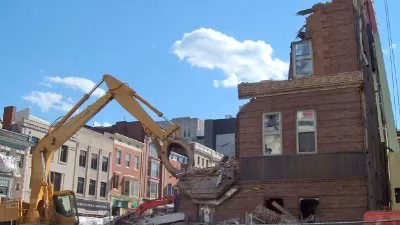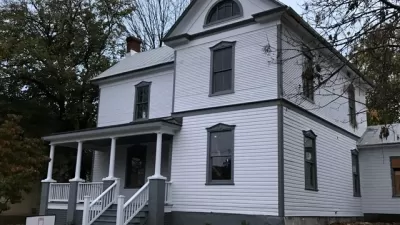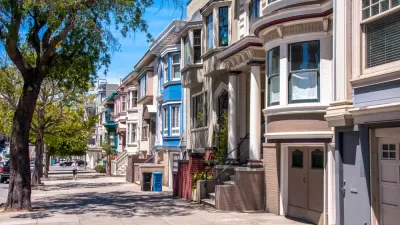In a rebuttal to criticisms leveled at historic preservation districts, Stephanie Meeks of the National Trust for Historic Preservation argues that historic preservation has value and can aid in creating affordable housing.

Writing in CityLab, Stephanie Meeks asks that critics who claim that historic preservation districts are contributing to a lack of affordable housing in our cities take a step back and find "ways to increase density and affordability in cities that don’t involve destroying the historic fabric of our communities."
Meeks writes that the benefits from our historic neighborhoods are both tangible and intangible. They connect residents to their neighborhoods and to those who came before, creating what Meeks describes as "living history lessons." In addition, many of our older neighborhoods hold opportunities for the adaptive reuse of the existing building stock to create multi-family units. Creating density in older neighborhoods doesn’t always require tearing down existing buildings to build taller.
Economists such as Edward Glaeser have argued that historic districts prevent affordability by limiting tall and dense new development that could fit everyone. But, as the urban planner Jeff Speck points out in Walkable City, 'economists don’t seem to have fully processed one thing the designers know, which is how tremendously dense a city can become at moderate heights.'
FULL STORY: Why Historic Preservation Districts Are Crucial to Cities

Trump Administration Could Effectively End Housing Voucher Program
Federal officials are eyeing major cuts to the Section 8 program that helps millions of low-income households pay rent.

Planetizen Federal Action Tracker
A weekly monitor of how Trump’s orders and actions are impacting planners and planning in America.

Ken Jennings Launches Transit Web Series
The Jeopardy champ wants you to ride public transit.

Washington Legislature Passes Rent Increase Cap
A bill that caps rent increases at 7 percent plus inflation is headed to the governor’s desk.

From Planning to Action: How LA County Is Rethinking Climate Resilience
Chief Sustainability Officer Rita Kampalath outlines the County’s shift from planning to implementation in its climate resilience efforts, emphasizing cross-departmental coordination, updated recovery strategies, and the need for flexible funding.

New Mexico Aging Department Commits to Helping Seniors Age ‘In Place’ and ‘Autonomously’ in New Draft Plan
As New Mexico’s population of seniors continues to grow, the state’s aging department is proposing expanded initiatives to help seniors maintain their autonomy while also supporting family caregivers.
Urban Design for Planners 1: Software Tools
This six-course series explores essential urban design concepts using open source software and equips planners with the tools they need to participate fully in the urban design process.
Planning for Universal Design
Learn the tools for implementing Universal Design in planning regulations.
Heyer Gruel & Associates PA
Ada County Highway District
Institute for Housing and Urban Development Studies (IHS)
City of Grandview
Harvard GSD Executive Education
Toledo-Lucas County Plan Commissions
Salt Lake City
NYU Wagner Graduate School of Public Service





























